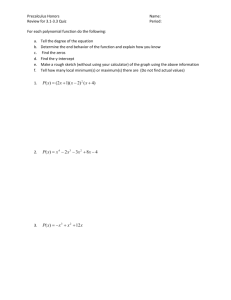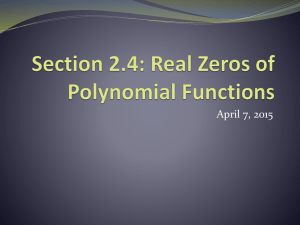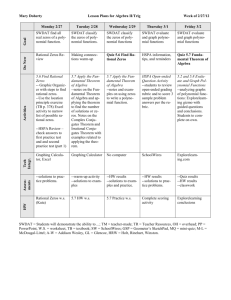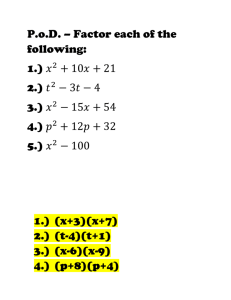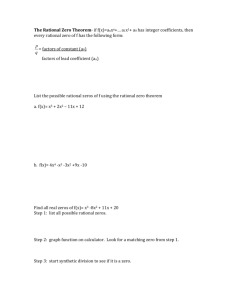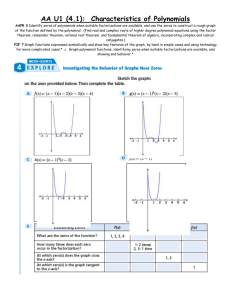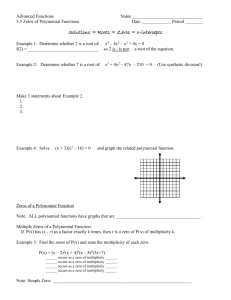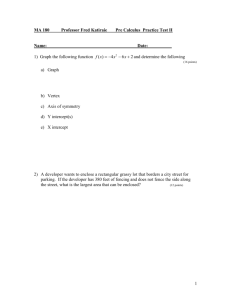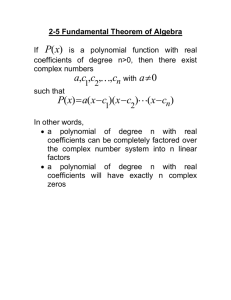Mini 5.5
advertisement
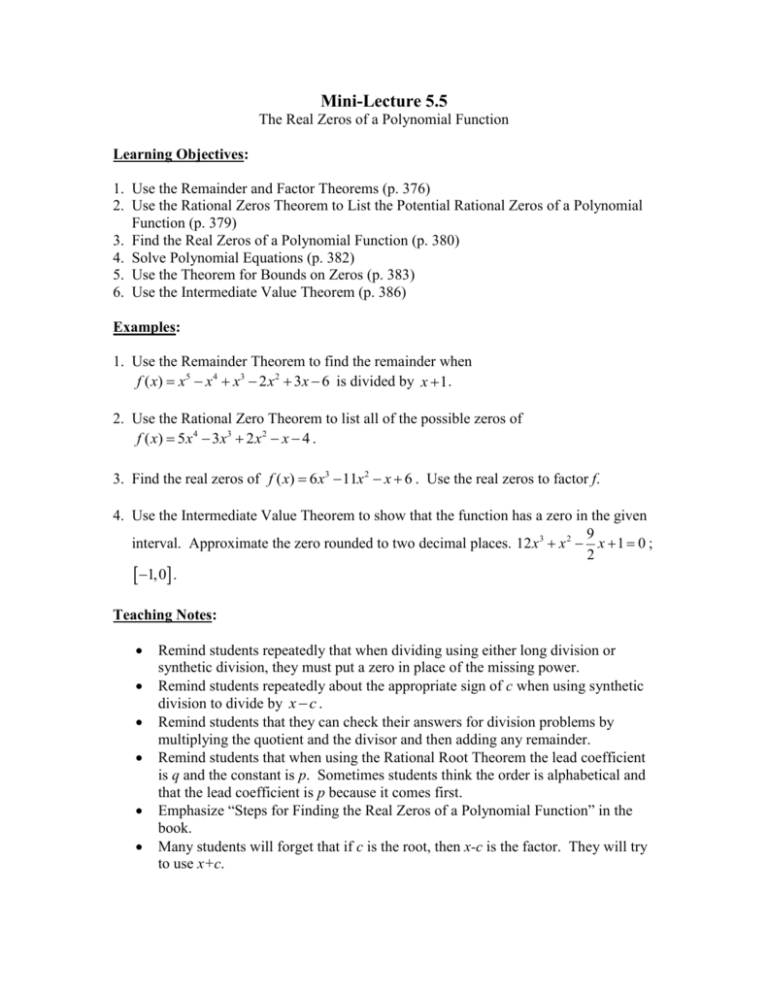
Mini-Lecture 5.5 The Real Zeros of a Polynomial Function Learning Objectives: 1. Use the Remainder and Factor Theorems (p. 376) 2. Use the Rational Zeros Theorem to List the Potential Rational Zeros of a Polynomial Function (p. 379) 3. Find the Real Zeros of a Polynomial Function (p. 380) 4. Solve Polynomial Equations (p. 382) 5. Use the Theorem for Bounds on Zeros (p. 383) 6. Use the Intermediate Value Theorem (p. 386) Examples: 1. Use the Remainder Theorem to find the remainder when f ( x) x5 x 4 x3 2 x 2 3x 6 is divided by x 1. 2. Use the Rational Zero Theorem to list all of the possible zeros of f ( x) 5 x 4 3 x 3 2 x 2 x 4 . 3. Find the real zeros of f ( x) 6 x3 11x 2 x 6 . Use the real zeros to factor f. 4. Use the Intermediate Value Theorem to show that the function has a zero in the given 9 interval. Approximate the zero rounded to two decimal places. 12 x3 x 2 x 1 0 ; 2 1,0 . Teaching Notes: Remind students repeatedly that when dividing using either long division or synthetic division, they must put a zero in place of the missing power. Remind students repeatedly about the appropriate sign of c when using synthetic division to divide by x c . Remind students that they can check their answers for division problems by multiplying the quotient and the divisor and then adding any remainder. Remind students that when using the Rational Root Theorem the lead coefficient is q and the constant is p. Sometimes students think the order is alphabetical and that the lead coefficient is p because it comes first. Emphasize “Steps for Finding the Real Zeros of a Polynomial Function” in the book. Many students will forget that if c is the root, then x-c is the factor. They will try to use x+c. 1 4 2 3 2 Answer: 1) -14; 2) 1, , 4, , 2, ; 3) , ,1 , f ( x) (2 x 3)(3x 2)( x 1) ; 5 5 5 2 3 4) -0.74
